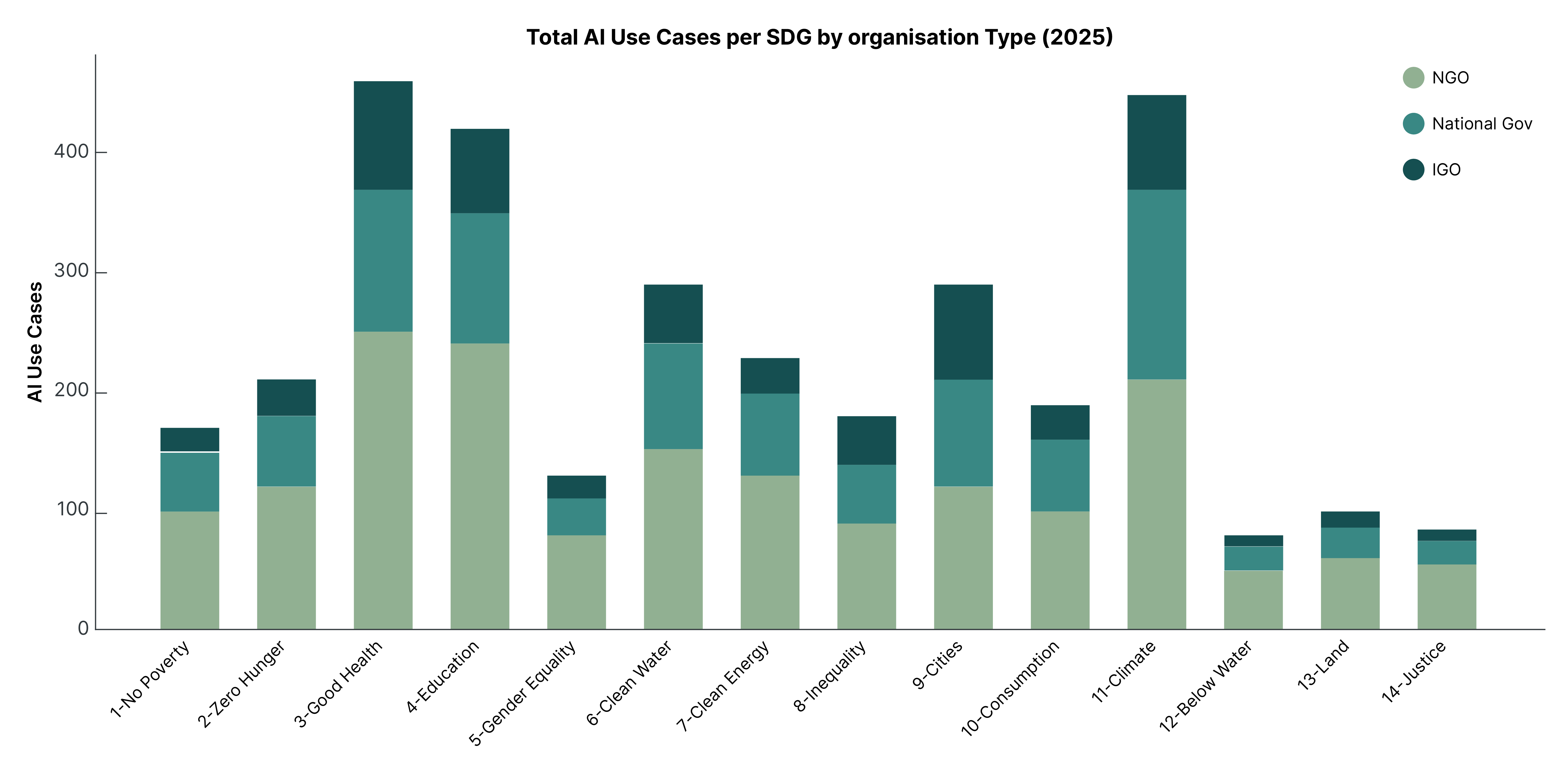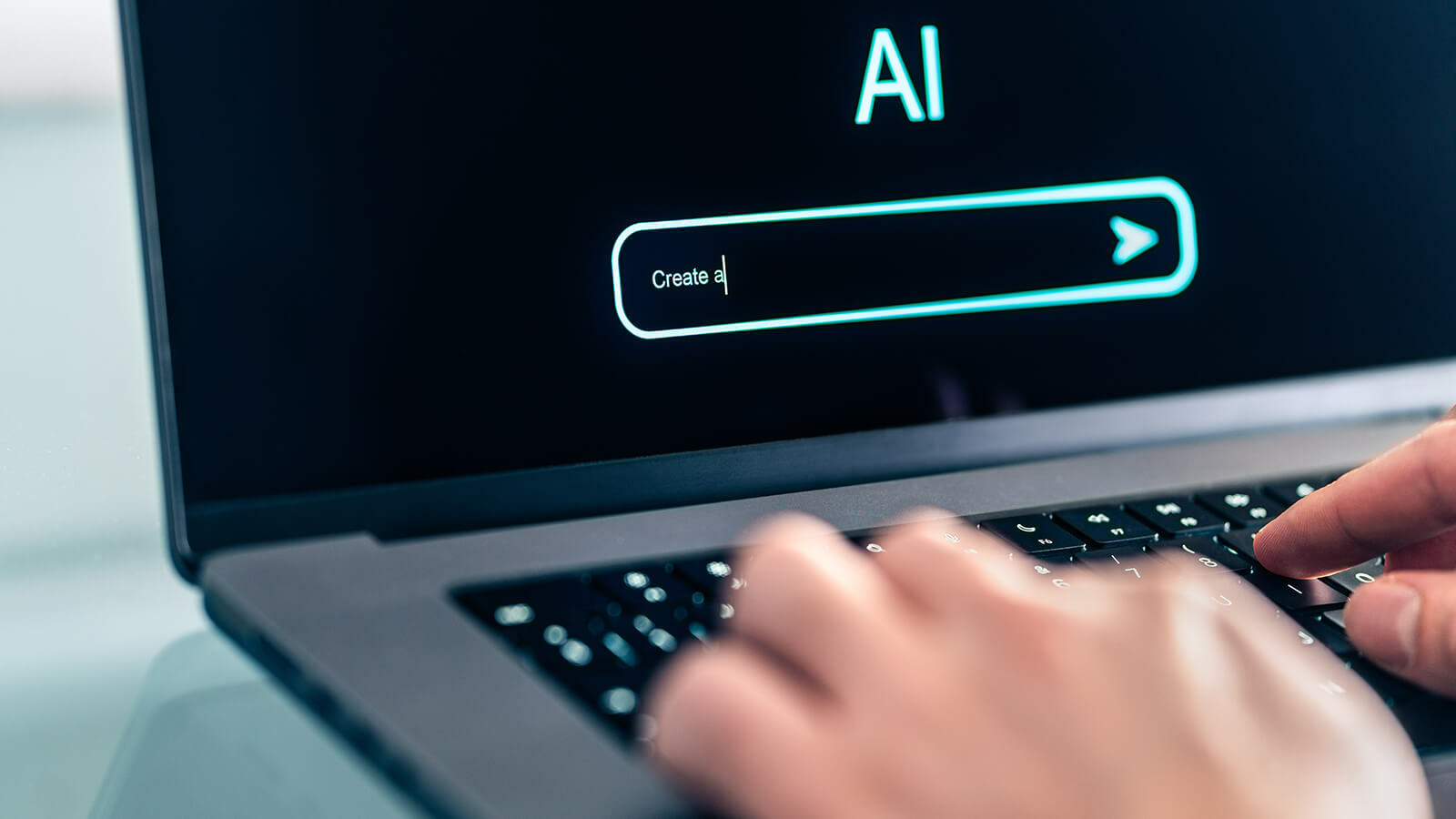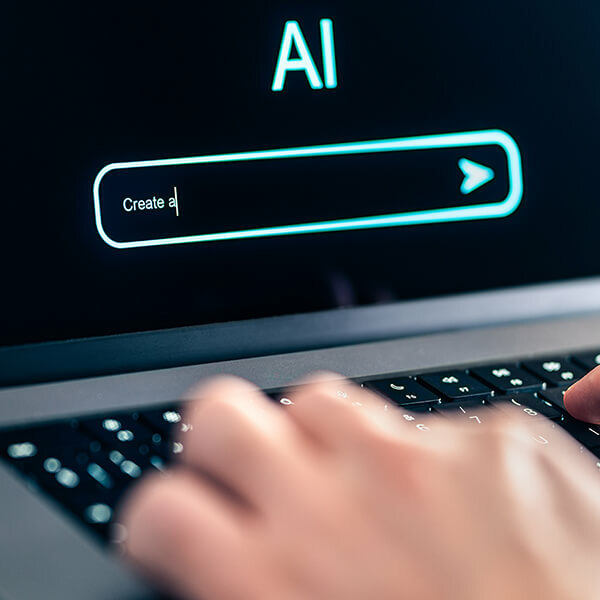Date
19.06.2025
AI for Social Good: Empowering Business Innovation and Community Transformation
Artificial Intelligence (AI) is no longer just a tool for efficiency – it’s a powerful force for social change. From improving accessibility to addressing global challenges, AI-driven solutions are helping businesses stay competitive and build stronger connections with purpose-driven customers. So how can you integrate AI into your mission to drive social change and create a better future?
"AI is just a tool – it's how we choose to use it that ultimately determines its impact."
Some people have a theory that AI is making us less human; that it’s dictating our decisions, eroding our creativity and even removing our empathy. Others suggest AI is merely changing how we interact with the world, that it’s instead making us more connected, more aware and even more compassionate.
It can be hard to decide which side of the fence we want to sit on. In just a few years we’ve adapted to AI-powered assistants becoming our sounding boards, to algorithms predicting and anticipating our needs, and even real-time translations that break down language barriers. AI is convenient and efficient but lacks the ‘human’ touch. It can bring us together and let us cross the chasms that divide us, but it can also remove the need for us to speak to each other at all.
What is for certain is that we’re currently in unchartered territory. This is another digital revolution. The question isn’t whether AI will change society – it already is. Instead, especially while the technology powering AI continues to evolve at rapid pace, we need to be asking ourselves not what AI technology could do, but what it should do. If we’re going to embrace AI and let it change our world, how do we ensure it changes it for the better?
Understanding AI: What It Is, and What It Isn’t
What springs to mind when you think of AI? Is it a humanoid robot programmed to meet your every need but operating under the lingering threat of a bot-fuelled uprising? If it is, I’m pleased to tell you that this is just an idea that has fuelled Hollywood studios and media headlines for decades. Sam Altman (CEO of OpenAI) did admit to The New Yorker in 2016 that he had a stash of “guns, gold, potassium iodide, antibiotics, batteries, water, gas masks” – just in case AI went rogue. But is this genuine fear of an AI takeover or a headline grabbing soundbite? You can decide for yourself.
The reality is far more mundane and far more practical. AI isn’t a singular thing but a broad term that covers a range of technologies designed to simulate aspects of human intelligence, from pattern recognition and decision making to language generation and prediction. It is about creating systems that don’t just process data from a set of instructions, but learn from that data and eventually adapt, optimise and create based on that data.
You can see a lot of this in day-to-day life; chatbots, predictive messaging, fraud detection, medical diagnostics…the list goes on. As a business we use AI plenty – it helps us to streamline our workflows so our studio operates efficiently, transcribe meetings so that everyone can be present, compare datasets to help us make important decisions that allow us to grow with a healthy bottom-line. For our clients, we help integrate intelligent chatbots and advanced search features into their websites so their customers can find what they need, faster. We’ve worked with climate NGOs to improve user pathways for behaviour-change campaigns, with health charities to build content discovery tools powered by natural language search, and with purpose-driven brands to ensure their messaging is understood and surfaced accurately across AI-driven platforms. We also collaborate with our clients on Artificial Intelligence Optimization (AIO) and Generative Engine Optimisation (GEO) to help them understand, monitor and enhance the visibility of their businesses and brands across AI-powered platforms like ChatGPT, Gemini, Perplexity, and SearchGPT. By analysing how large language models (LLMs) interpret and mention their brand, we can provide strategic, data-backed insights to refine positioning, messaging, and digital presence in the AI landscape.
But here’s the important point in all of this: AI doesn’t think like humans. It processes data, finds patterns and mimics language. It does an excellent impression of human thinking (some models better than others…) but it’s just an impression. AI doesn’t understand, feel or mean anything in the way that we do as humans.
Building Trust in AI: Transparency and Human-Centred Design
Much of the polarised view of AI comes down to a matter of trust – our trust in using AI in the first place, our trust in the information AI passes on to us, and that ever-expanding grey area around whether any digital content we consume is AI or human generated.
There is something quietly unsettling about how quickly we’ve handed things over. The conveniency of AI has taken us from spellcheck and auto-suggestion to full-on delegation. We let AI tell us what to write, what to watch, where to go. We are happy to let machines think on our behalf, removing from us the challenges of hard choices, spontaneity and even creativity. This raises uncomfortable questions – where does authorship end and automation begin? If we compress our grey matter into a series of prompts, what is left that is genuinely us?
It all feels very impersonal, the opposite of what we know makes brands, products and services genuinely appealing. Sure, AI can be operationally efficient. It can reduce overheads as well as speed up and refine processes. But from a customer’s perspective there’s nothing worse than when you’re trying to resolve a problem and get passed from chatbot to chatbot and automated message to automated message. “I just want to talk to a human being” is a phrase we have all uttered at least once. People want to feel seen, understood, valued and, most importantly, they want to feel this from another human being, not a computer.
This is not to say that AI is bad. Quite the opposite. It can be wonderful for ideation, for troubleshooting, for getting rid of the ominous ‘blank page’ and getting you started on a plan. It can let you bounce ideas around and try new things in an environment free from human judgement. But AI should be your starting block. You can’t take something from AI to real-world without humanising it first. This is where people get put off, where trust in a person, business or brand erodes.
We all have an in-built instinct that lets us feel a sense of revulsion when something that isn’t human is trying to pass itself off as being one. (If you’ve never heard of the ‘uncanny valley’, have a Google.) People aren’t anti-AI, they’re anti-fake. We don’t like to feel we’ve been lied to or manipulated. Trust is one of the most important things for any business in any sector, and we see it as our responsibility for all our clients to help them build and maintain this trust with their own customers. If you use AI, step up and own it. Being transparent doesn’t weaken your message, it strengthens your credibility. This article you’re reading right now? We used AI to get us started, to generate some ideas and examples for structure, but in the end, it’s been written by a human.
At Design for Change, we see AI as an empowering tool, but never a creative replacement. We use it to speed up research, explore new ideas, and overcome creative blocks, but at the heart of every campaign, strategy or story are people. Empathy, purpose and cultural relevance can’t be automated. They must be authentically and intentionally designed.
So, when we talk on a grander scale about AI driving or threatening social change, what we’re really talking about is how we build and apply AI-powered tools. AI output reflects human input – it’s never neutral. It will always be encoded by us, taking on our choices, our biases and our intentions. The responsibility on making sure these inputs are designed for a better future is entirely our own. If we own how and when we use it, if we ensure we use it in ways that genuinely allow us to enhance our humanity rather than erase it, the future ahead of us could be truly amazing.
AI for SDGs: Where Potential Meets Action
It’s tempting to think that AI is the answer to all our problems. We can dream up plenty of ways where AI can make an astounding difference, even in some of the biggest issues and crises that affect the entire world. However, as you’ll see from the graph below, this potential doesn’t always translate into action:

UN DESA “AI for Good Impact Report” (2024) – expert perception per SDG social.desa.un.org
UN SDG Report (2024) – highlights critical SDG progress and AI potential reuters.com
Why have climate action and healthcare experienced such a surge in non-profit-led AI power, while poverty, hunger and clean water have not?
Simply put: we have a disconnect, in many cases at the highest levels of politics, business and finance. Some Sustainable Development Goals (SDGs), like SDG 13: Climate Action and SDG 3: Good Health and Well-Being, are attracting significant AI investment with good reason. AI can help model and predict floods before they happen, spot diseases before they spread, and scale medical advice in regions without doctors. Unfortunately, other goals, like SDG 1: No Poverty or SDG 2: Zero Hunger, remain low on both perceived potential and deployment. This isn’t because AI can’t help – it’s because the systems, data, and incentives to apply AI meaningfully in these areas aren’t yet in place.
This matters. When we talk about AI for social good, we’re not just talking about technology, but about priorities and intention. Who decides what problems are worth solving? Who funds them? And who benefits?
As designers, strategists, and storytellers working in the social impact space, we believe AI should be directed where it’s most needed, not just where it’s easiest to deploy. That means questioning assumptions, pushing for more inclusive data, and designing with equity at the centre. Yes the technology is moving fast, but we get to decide where it goes.
AI for Social Good: Real-World Applications that Empower Communities
When you strip away the hype and bluster that surrounds the world of AI, the real opportunity isn’t how fast or how much it can automate, but how much positive change it can truly support. The best AI-powered systems are not designed to replace humans, but to amplify what they do best – solving problems, creating access and driving progress.
All around the world there are amazing AI-powered initiatives that are making huge leaps in social and environmental changes:
- The World Bee Project established the World Hive Network to better understand how and why the global bee population is in decline and what we can do to take action to save them.
- Farmers in drought-prone regions are using AI to help monitor soil health and conserve water.
- Using AI to optimise construction and health & safety processes not only saves time and money but also potentially saves lives by minimising human error.
- In the world of medicine, AI is helping to detect, identify and guide treatment for cancer cells among other illnesses.
- AI is also helping people with physical disabilities, from AI-powered wheelchairs and prosthetics to apps and software that all work together to make the world we live in more accessible.
The applications of AI are seemingly limitless; the real choice is which applications we support and drive. As a studio committed to equity and access, we pay close attention to how the AI tools we use are trained, and the kinds of data they draw from. Whenever possible, we vet and customise AI systems to reduce the risk of bias, particularly when we’re designing for marginalised groups or communities. It’s on us to make sure that we choose the systems and applications which will lift communities up, and to ensure that the data these systems learn from is unbiased so that everyone can feel the benefit.
Ethical implementation isn’t optional; it’s fundamental to meaningful impact. With care, deliberation and intention, using AI won’t make us less human – it’ll help us become more so.
Designing Ethical AI Solutions for a Purpose-Driven Future
At its core, AI is just a tool. How we choose to use it ultimately determines its impact, and it’s our belief that it should be used not just for performance and efficiency but for purpose. From increasing digital accessibility to supporting climate innovation, AI has the potential to address some of the world’s most pressing challenges. But realising this potential requires more than just technical expertise – it demands vision, responsibility, and trust.
Design for Change means designing for a better future, one where we help our clients to harness AI in ways that are ethical, human-centred and socially and environmentally conscious. Whether it's helping brands understand how AI platforms perceive their identity, optimising their presence in the AI landscape, or building smarter, more intuitive tools for their users, we aim to create solutions that empower people, not replace them.
By prioritising transparency, inclusivity, and purpose-driven design, we help our clients harness AI not just to keep up with digital change, but to lead it, ethically and effectively.
If you're a purpose-driven organisation ready to explore how AI can support your mission, we’d love to work with you. Together we can design smarter, kinder and more inclusive digital experiences that have a better world in mind.

